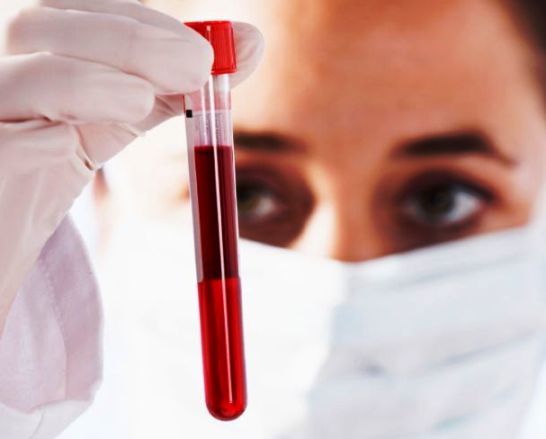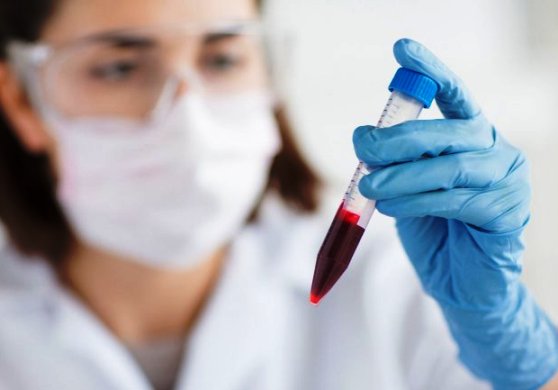An important characteristic that makes it possible to detect the presence of many diseases in the early stages of their development is C-reactive protein (CRP) in the blood. In another way, this indicator is called the Acute Phase Protein, since it is detected in the blood precisely in the presence of acute inflammatory processes. CRP is an important defense mechanism: it activates inflammation and neutralizes toxins produced by viruses that have entered our body. The presence of elevated CRP in a biochemical blood test indicates the development of pathological processes in a person, including tumors, accompanied by tissue necrosis.
Causes of changes in the level of C-reactive protein
When viruses and bacteria enter the blood of an adult or a child, the liver begins to produce C-reactive protein, an increased level of which serves as an alarm signal. Therefore, CRP analysis is an important diagnostic criterion. This biochemical analysis, combined with the existing symptoms, allows you to establish the range of the most likely diseases.
CRP in the blood is elevated - what is it and what diseases can it indicate? All causes are conditionally divided into groups: the presence of infections and decomposition (necrosis) of tissues.
The first group of causes is caused by viruses and bacterial infections:
- blood poisoning, including neonatal sepsis;
- any postoperative complications;
- inflammatory processes in the brain or spinal cord (meningitis);
- tuberculosis;
- gastrointestinal diseases;
- certain blood diseases, such as neutropenia;
- chronic immunopathological diseases in the acute stage;
- acute viral infections.
The second group of reasons is directly related to the destruction and death of tissues:
- necrosis of muscle heart tissue, myocardial infarction (the growth of reactive protein is determined already on the second day after a heart attack);
- any malignant tumors, metastases;
- atherosclerotic changes in blood vessels;
- injuries, frostbite and burns, in which the skin membranes are significantly damaged;
- systemic rheumatic diseases (reactive and rheumatoid arthritis, vasculitis, osteoarthritis, systemic lupus erythematosus);
- secondary amyloidosis;
- reactions to implant rejection.

In some cases, biochemical analysis shows high CRP in diabetes mellitus, with certain hormonal disorders in women (when the hormones progesterone and estrogen are elevated).
In addition to the above pathological conditions that affect the increase in CRP, a change in the level of C-reactive protein from the norm can also be caused by some physiological conditions of an adult patient. For example, this indicator increases in athletes during periods of intensive training before competitions; in pregnant women during periods of severe toxicosis; in adults taking hormonal contraceptives. CRP can be lowered against the background of long-term use of glucocorticoids, non-steroidal anti-inflammatory drugs, beta-blockers.
Norm and interpretation of CRP analysis
The concentration of CRP increases sharply already in the first hours, reaching its maximum on the second or third day of illness. The indicator can increase several thousand times with a bacterial infection. But with a viral infection, the indicator increases only tenfold. The development of atherosclerosis, myocardial infarctions increase the level of CRP slightly, by 5-20 times. After the cessation of the inflammatory process, protein production in the liver stops and the indicators return to normal. As a rule, the amount of protein is normalized for 6-12 days after the start of intensive treatment.
The norm of CRP in the blood in men and women is the same and, according to different methods, lies in the range of 0.1-0.5 mg / l.
The norm of CRP in the blood of women during pregnancy is allowed up to 3 mg / l: that is, the indicator is increased, but this is not a pathology and is explained by hormonal changes occurring during this period in the female body.
 CRP more than 3 mg/l most likely indicates the development of vascular diseases and atherosclerosis. Figures of 15-30 mg / l may indicate viral pathologies, rheumatic diseases and metastases. The numbers 30-200 mg / l indicate the development of either bacterial infections, or the occurrence of a cardioinfarction. If the indicators tend to 300 mg / l and above, then this signals the development of sepsis and generalized infections. Therefore, with indicators above 10 mg / l, additional diagnostic procedures are always carried out without fail: MRI, ultrasound of internal organs, ultrasound of the heart muscle, immunological blood tests, endoscopic procedures.
CRP more than 3 mg/l most likely indicates the development of vascular diseases and atherosclerosis. Figures of 15-30 mg / l may indicate viral pathologies, rheumatic diseases and metastases. The numbers 30-200 mg / l indicate the development of either bacterial infections, or the occurrence of a cardioinfarction. If the indicators tend to 300 mg / l and above, then this signals the development of sepsis and generalized infections. Therefore, with indicators above 10 mg / l, additional diagnostic procedures are always carried out without fail: MRI, ultrasound of internal organs, ultrasound of the heart muscle, immunological blood tests, endoscopic procedures.
In a child of infancy, CRP does not always increase, which is explained by insufficient functional work of the immature liver. Therefore, even with blood poisoning, a biochemical analysis in a newborn can show a normal protein level. The child's condition is taken under strict control and requires immediate antibiotic therapy with CRP above 10-12 mg / l. Children's viral infections such as mumps, influenza, chickenpox, rubella and measles almost always give a jump in C-reactive protein on the first day, but after the competent treatment of CRP in the child's blood reaches the norm.
Preparation for biochemical analysis for C-reactive protein
 CRP blood test - what is it and how to prepare for it? The delivery of this biochemical analysis is carried out in the morning on an empty stomach. Blood is taken from a vein. The last meal - no later than 12 hours before the start of the analysis. In the evening, dinner should be light, without fatty foods, in moderation. It is not recommended to smoke immediately before the delivery of the biomaterial. On the eve, it is better to avoid drinking alcohol and strong coffee, as well as freshly squeezed juices. Thirst can be quenched with ordinary non-carbonated water.
CRP blood test - what is it and how to prepare for it? The delivery of this biochemical analysis is carried out in the morning on an empty stomach. Blood is taken from a vein. The last meal - no later than 12 hours before the start of the analysis. In the evening, dinner should be light, without fatty foods, in moderation. It is not recommended to smoke immediately before the delivery of the biomaterial. On the eve, it is better to avoid drinking alcohol and strong coffee, as well as freshly squeezed juices. Thirst can be quenched with ordinary non-carbonated water.
It is important to understand that an elevated level of C-reactive protein is only a signal of the presence of an inflammatory process, but does not indicate the root causes and source of the problem. Therefore, a competent doctor who can compare the indicators with the existing symptoms, evaluate the patient's complaints and establish the reasons why the pathology began to develop should be engaged in deciphering the analysis.


